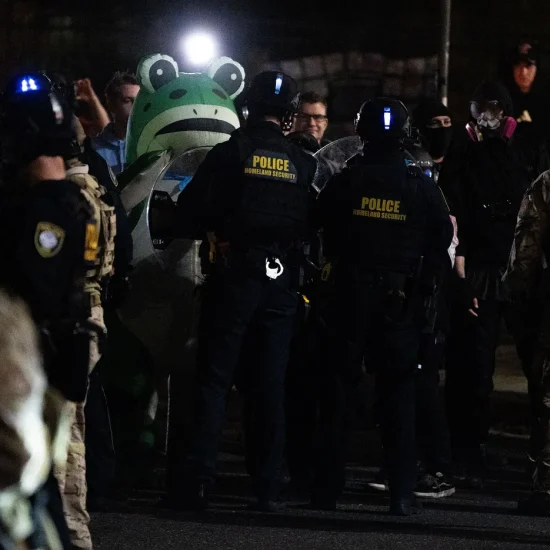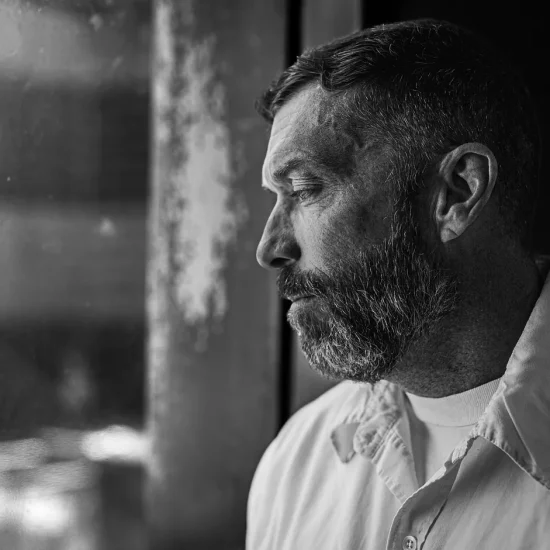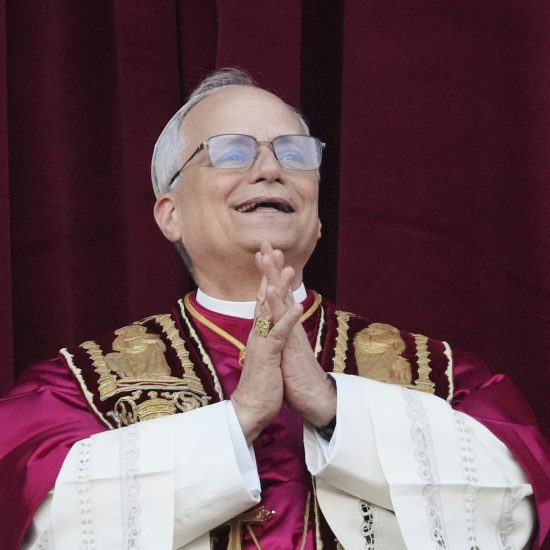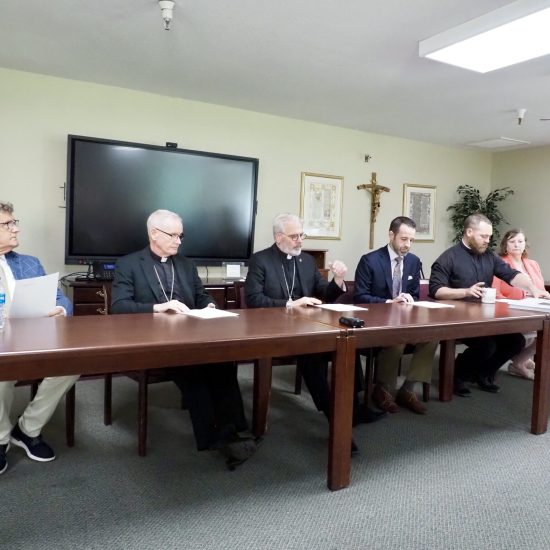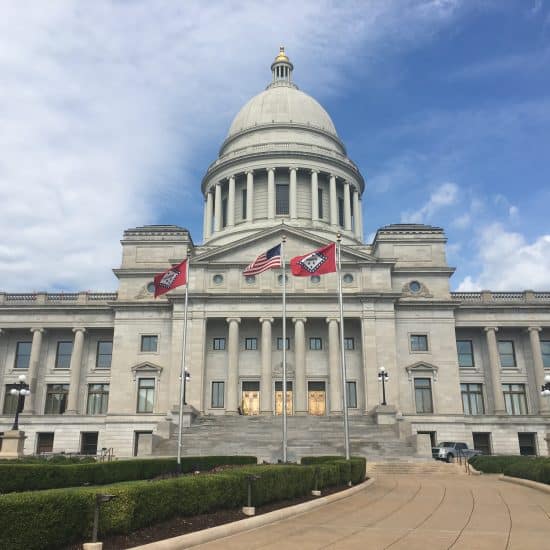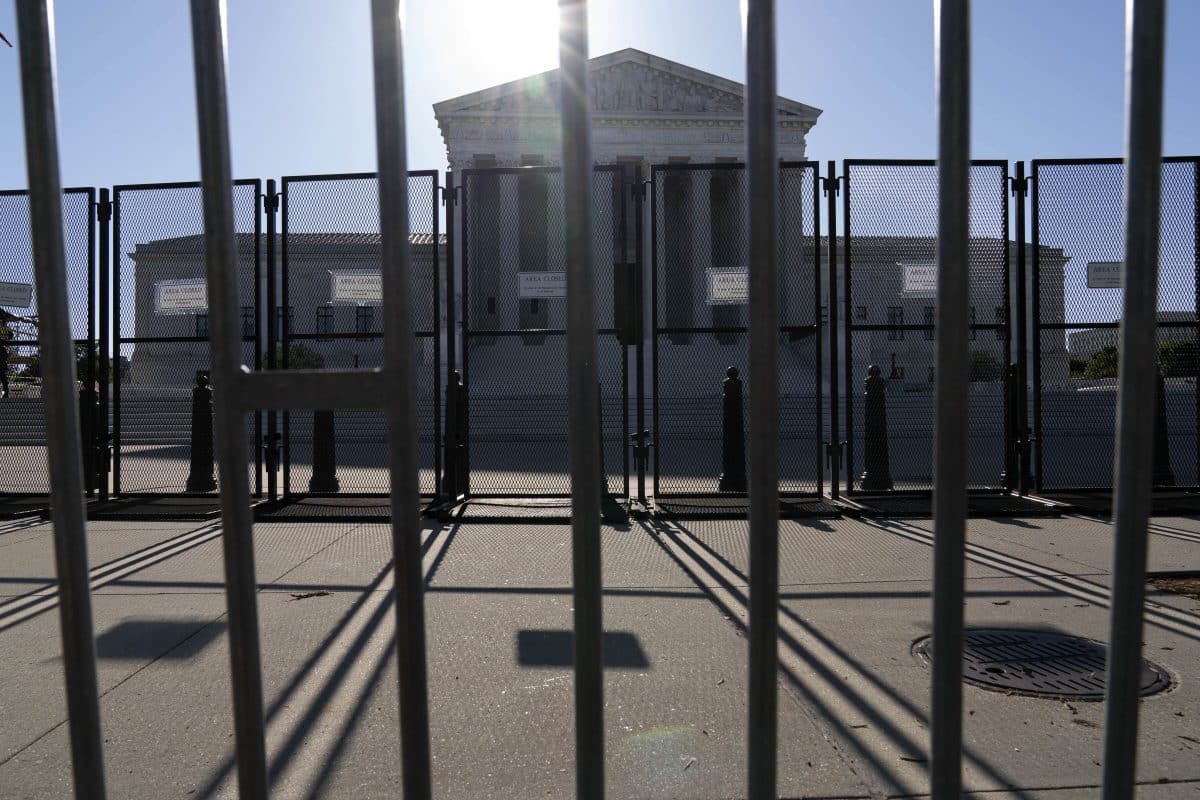
“Bring it on.”
That was the response of evangelist Franklin Graham to the news that pro-choice activists might protest outside Catholic churches on Sunday (May 8) following the leaks from the Supreme Court about a possible forthcoming decision overturning Roe v. Wade.
Graham’s tweet linked to a Fox News piece on Friday warning about the “targeting” of churches that would come Sunday. This claim, which rightwing sites amplified over the weekend, was based on tweets by a couple little-known pro-choice groups like one called “Ruth Sent Us” (apparently named after the late Justice Ruth Ginsburg and not the great-grandmother of David) and another known as “Rise Up 4 Abortion Rights.”
The Ruth group tweeted that since “six extremist Catholics” would overturn Roe, people should “stand at or in a local Catholic Church” that coming Sunday. (Apparently, Ruth didn’t send math books as the leaks suggest only five justices will vote to overturn Roe and only four are Catholics.) The tweet included a video of some pro-choice protesters chanting while being ushered out of an unidentified church, though it didn’t appear to be during a service. And the Rise Up group listed among a number of events the idea of “non-violent protests outside of prominent churches” on Sunday.
From these groups with a small online following, Fox News ran multiple stories over the weekend breathlessly warning about what was to come. At times, the coverage almost seemed to join Graham in hoping for a clash in a church. One piece highlighted a tweet encouraging people to protest at “places of worship.” The tweeter? A cartoonist. Yes, a random tweet by a guy who draws pictures for an online comic called Goats somehow made the lede of a Fox News piece to warn people about an upcoming “mass resistance and demonstration” movement. (A story that seems too farcical even for comics.)
Joining the effort to preemptively stoke controversy, U.S. Sen. Mike Lee of Utah and U.S. Rep. Chip Roy of Texas, called on Attorney General Merrick Garland to “swiftly alert and coordinate resources with state and local law enforcement” to protect churches. Of course, the Fox News report about their letter didn’t note that Lee and Roy both texted Trump administration officials ahead of the Jan. 6, 2021, insurrection with advice on helping overturn the 2020 election and then both voted against investigating the violent attack on our nation’s Capitol.
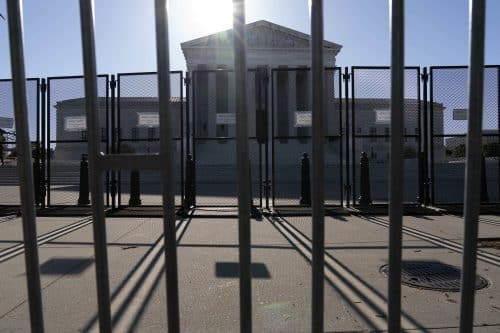
An anti-scaling fence is seen outside of the U.S. Supreme Court, on May 10, 2022, in Washington, D.C. (Jose Luis Magana/Associated Press)
Other conservative sites also promoted the church protest plan ahead of Sunday, including the Washington Times and New York Post. This effort by conservative media outlets to magnify the call for protests then sparked a conservative backlash, which Fox News highlighted in yet another piece to add to the feedback loop.
Several Catholic conservative activists joined Graham in dialing up the rhetoric. For instance, Bill Donohue of the conservative Catholic League criticized the “left-wing fascist group” Ruth Sent Us, adding that “if President Biden does not address this issue, he is aiding and abetting anti-Catholicism.” That guilty-if-quiet standard is a far cry from what Donahue used when defending Donald Trump after the very real violence of the Jan. 6 insurrection.
Even after Jen Psaki, Biden’s press secretary, explained to Fox News that Biden believes that “protests must be peaceful and free of violence, vandalism, or attempts to intimidate,” the outlet claimed “Biden declines to call off church protests.” On Monday, Psaki repeated that Biden thought “violence or vandalism” against Catholic churches or other places was “unacceptable.”
Although it might be tempting to ignore the online saber-rattling by fringe pro-choice activists and large conservative media outlets, the issue of church protests deserves closer examination. So, in this issue of A Public Witness, we look at the few protests at churches that actually occurred over the weekend. Then we recall more significant political protests in sanctuaries in the past before considering what all of this might portend for free speech in sacred spaces during this charged cultural moment.
Much Ado About Little
The feared violence and mass protests never materialized. The Catholic News Agency page tracking such incidents only lists four with just two happening at churches (and the other two incidents being acts of violence against anti-abortion groups).
One of the church moments was a Saturday standoff between anti-abortion protestors and abortion rights activists. On the first Saturday of each month, members of St. Patrick’s Cathedral in New York City gather at the church to march and demonstrate outside a Planned Parenthood clinic. Citing safety concerns, members held this month’s witness at the Cathedral where a group opposed to overturning Roe organized a counterprotest.
So, rather than a protest of a church service, this was a counterprotest of a protest coming from a church — but which Fox News reported as “NYC church swarmed by pro-abortion protesters.” Additionally, a group of men from the “Catholic Caucus” of the New York Young Republican Club stood in front of the church during the protest to “protect” it. A man in front of the group wore FDNY clothes (though FDNY says he’s not a firefighter) and a blue “America First” cap popularized by Nick Fuentes, a White Supremacist and proponent of Christian Nationalism who rallied near the Capitol on Jan. 6.
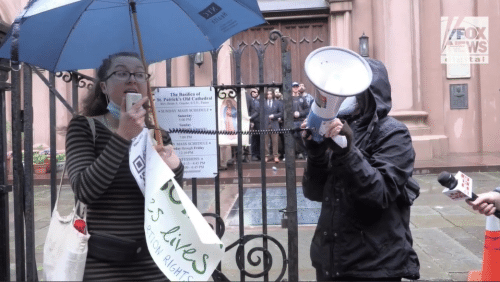
Screengrab of Fox News coverage of competing protests outside St. Patrick’s Cathedral in New York City on May 7, 2022.
A second incident at a church this weekend occurred in Los Angeles, California. A group disrupted the 10 a.m. mass at the Cathedral of Our Lady of the Angels. Church staff and security quickly stifled the demonstration.
The CNA list did not contain an incident from last week where vandals sprayed graffiti on the exterior of a Catholic parish in Boulder, Colorado. It also missed a protest Sunday on the sidewalk outside a parish in Atlanta, Georgia.
Given the alarm bells sounded in the media about the potential for wider protests in churches, several conservative groups and politicians threatened legal action against those causing disruptions. For instance, Jason Miyares, the attorney general of Virginia, warned would-be demonstrators that “federal law makes it a felony to intimidate, interfere with, or obstruct any person who is seeking to exercise his or her First Amendment right of religious freedom at a place of religious worship.”
One of the laws cited is the Freedom of Access to Clinic Entrances Act, which Salon’s Kathryn Joyce called “especially ironic” because it “was passed in 1994 specifically to address an onslaught of violent attacks on abortion clinics, from clinic blockades and invasions to bombings and assassinations.” During congressional debate, Republican Sen. Orrin Hatch of Utah successfully pushed an amendment to extend the bill’s protection to houses of worship (and he specifically cited demonstrations at New York’s St. Patrick’s Cathedral as justification).
Largely left unspoken in the hysteria this weekend was the most egregious act of abortion-related violence that occurred inside a church. On May 31, 2009, a man walked into Reformation Lutheran Church, an ELCA congregation in Wichita, Kansas, and shot one of the ushers dead during the service. The victim was George Tiller, a doctor often targeted with anti-abortion protests, including outside his church.
Like today, Fox News (specifically Bill O’Reilly) had regularly stoked outrage and anger toward Tiller. Despite focusing attention on the doctor, O’Reilly denied any responsibility for his death. After the assassination, the now-disgraced host told his audience, “When I heard about Tiller’s murder, I knew pro-abortion zealots and Fox News haters would attempt to blame us for the crime, and that’s exactly what has happened.” Even the murder of a man in church didn’t bring a pause in the heated rhetoric.
Help sustain the ministry of Word&Way by subscribing to A Public Witness!
Nothing New Under the Sun
Protesting at or even in churches isn’t without precedent. Pro-choice activists earlier this year used projection art to display a visual protest message on the side of the Basilica of the National Shrine of the Immaculate Conception in Washington, D.C. — a move an archbishop called “diabolical” and an “attempted desecration” (we agree that PowerPoint is hellish). But there’s a history that goes back decades of U.S. political protests spilling into churches.
In 1969, civil rights leader James Forman asked the liberal Riverside Church in New York City for permission to read during a service the “Black Manifesto,” a new document developed during the National Black Economic Development Conference that called for reparations from White churches and synagogues to undo the consequences of slavery and segregation. The pastor denied his request, so he instead marched up to the pulpit during a Sunday service on May 4 and started to read it. Before he could finish, the organist drowned over him with the hymn “May Jesus Christ be Praised” as the pastor led most of the congregation to silently walk out of the sanctuary.
The incident not only sparked media coverage but also prompted some actions by Riverside. Although the church quickly got a restraining order against Forman, it also created a fund for social justice just days after the service. A couple months later, Campbell preached a sermon on “the case for reparations” and invited Dr. James Cone to teach about Black theology. The church recognized the reading of the Black Manifesto a few years ago with an exhibit for the 50th anniversary of Forman’s protest. And in recent years the reparations effort has started to gain support and action from some religious groups.
In an upcoming episode of Dangerous Dogma, Riverside’s interim senior minister, Michael Livingston, calls Forman’s protest “a very powerful moment.” And Livingston noted that reparations is still an important issue as the church just finished a virtual series to study the topic since the “wound” of racism and “history of enslaving people” remains “unresolved.”
“We have people here, by the way, who were present when that happened and can tell you how they reacted,” Livingston adds. “You see the range of reactions. Some who were abhorrent of what they were watching, got up and left. Some who sat in stunned silence. And some who were more than curious but even to some extent cheering this moment and applauding that this issue would be brought right down front in the chancel during a worship service.”
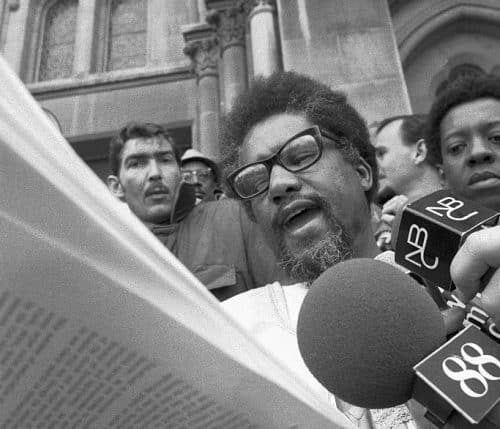
James Forman reads a statement outside Riverside Church in New York City on May 11,1969. (Bettmann/Getty)
After Forman’s protest at Riverside, Latino activists in 1969 and 1970 disrupted and briefly occupied church and seminary buildings to call attention to inequities and injustices. In the book Apostles of Change: Latino Radical Politics, Church Occupations, and the Fight to Save the Barrio, historian Felipe Hinojosa tells the stories of some such occupations in four cities — Chicago, Los Angeles, New York, and Houston — that involved Catholic, Methodist, and Presbyterian churches and seminaries.
“Choosing to occupy churches was not a random act. Latina/o radicals were out to make a point about the symbolism and power of the church in neighborhoods across the country,” Hinojosa wrote. “Churches became strategic sites, indeed sacred spaces, where radical groups staged their movements and proclaimed their message of community control and power in the world.”
In 1989, the AIDS Coalition to Unleash Power (more commonly known as ACT Up) staged a protest and die-in during Mass at St. Patrick’s in New York City. Controversial both inside and outside the group, the incident challenged Cardinal John O’Connor’s opposition to sex education in public schools at the height of the AIDS epidemic. Over 100 protesters were arrested, and the incident sparked criticism from Republican and Democratic politicians.
Other churches have been targeted for protests as well, showing that houses of worship (or the public sidewalks outside of them) have been contested spaces long before the calls by some pro-choice activists last week. But given the sacredness of these spaces, that hasn’t stopped such protests from being controversial, unpopular, and sometimes criminal.
Get cutting-edge reporting and analysis like this in your inbox every week by subscribing today!
New Normal?
It wasn’t that long ago that some thought our society could find middle ground on abortion. Back in 2010, a prominent Catholic intellectual like George Dennis O’Brien could agree that abortion was “an intrinsic evil” and still caution against the absolutism of the Catholic hierarchy’s push to overturn Roe since he believed “both pro-life and pro-choice combatants have oversimplified the issue.” During the Obama presidency, pro-life religious leaders and abortion rights advocates joined together to focus on reducing the number of abortions performed in the United States, with their efforts encouraged by the pro-choice president himself.
Just over a decade later, both the nation and our churches are in a much different place as people prepare for the Court’s official ruling. California and other Democratic-controlled states are moving to enshrine abortion rights into law. Conservative-leaning states are restricting, banning, and even criminalizing abortion. U.S. Sen. Mitch McConnell floated passing a national abortion ban if Republicans retake the Senate. Mississippi’s governor refused to rule out bans on contraception.
With our partisan divisions widening, politics influencing our religious identities, and the line between church sanctuaries and campaign stops increasingly blurring, perhaps the surprising thing is that more political protests didn’t arise during worship this past weekend. This is especially true in places like the church in New York City where the protest covered by Fox News was actually a response to a monthly protest emanating from the church building. When our sacred places increasingly become partisan spaces, counterprotests seem more likely to occur.
Unlike Franklin Graham, we are not inviting such confrontations. And we echo the Biden administration and others in strongly condemning violence and intimidation (like the despicable Molotov cocktail attack on the Oregon Right to Life building in Keizer on Sunday night).
But when peaceful protests occur outside of churches — like in New York City on Saturday or in Atlanta on Sunday — the U.S. Supreme Court has already said that’s legal. In 2011, Chief Justice John Roberts wrote the 8-1 opinion in Snyder v. Phelps, arguing that the group calling itself Westboro Baptist Church had the First Amendment right to protest on a public sidewalk during a military veteran’s funeral in a nearby church.
Now other activists enjoy the same free speech rights. After all, it’s a settled precedent of the Supreme Court.
As a public witness,
Brian Kaylor & Beau Underwood
A Public Witness is a reader-supported publication of Word&Way. To receive new posts and support our journalism ministry, subscribe today.


